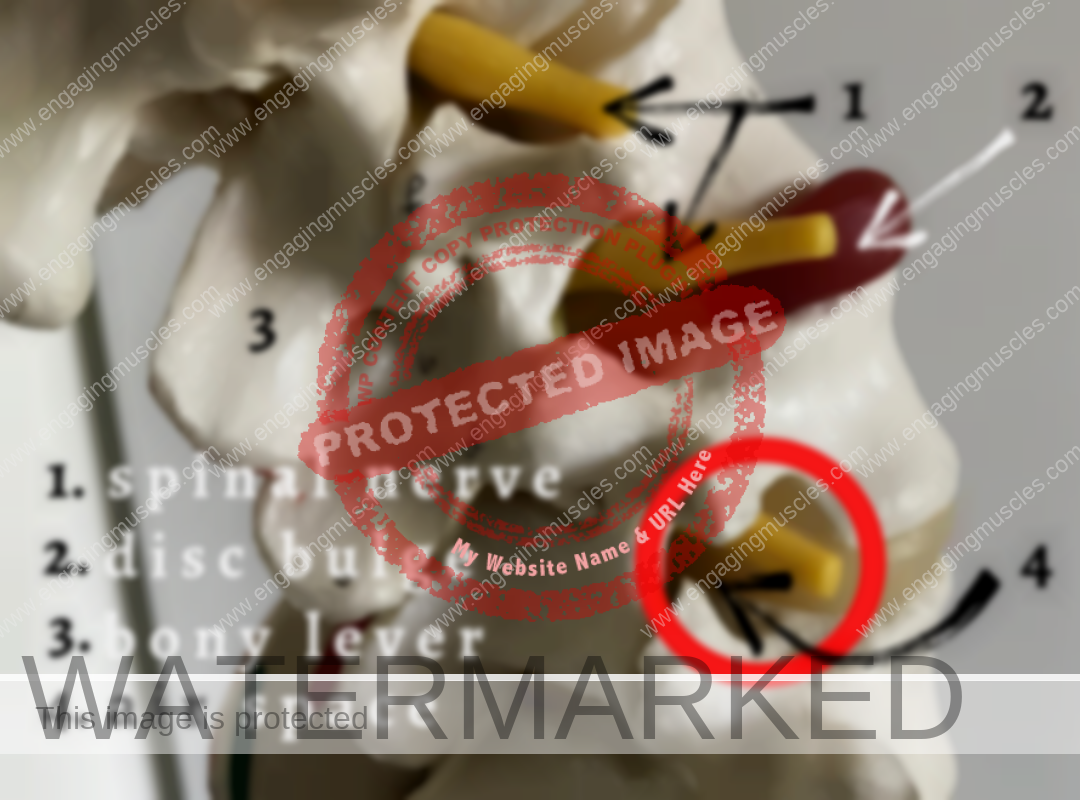IN EPISODE #685 OF THE TIM FERRISS SHOW, Ferriss spoke to Dr. Shirley Sahrmann, PT, about his low-back issues.
I have followed Tim Ferriss for years and learned a lot from his books. Over the years, I have also learned a lot from the guests he’s had on his podcast.
More recently, Ferriss recommended a delicious organic Pu’re tea I drink daily.
Because of what I have gained from Tim Ferriss’s podcast, books, and 5-Bullet Friday weekly newsletter, my words aren’t meant to be negative toward him.
Instead, I’m pointing out the not-so-obvious reasons Tim Ferriss has dealt with low-back issues and, more recently——plantar fasciitis.
Regarding low-back issues and plantar fasciitis, the important takeaway is this: Tim Ferriss doesn’t know what he doesn’t know.
Throughout the years, Tim Ferriss has regularly mentioned self-massage tools he likes.If it’s not a massage tool designed to release muscles and increase mobility, Ferriss regularly shares his thoughts on some version of a movement-based exercise.
Despite attempts to release muscles, increase mobility, and strengthen muscles over the years, Tim Ferriss has mentioned injuries he’s sustained. Often with dramatic effect.
When I’ve heard Ferriss mention an injury, I’ve thought to myself, how many of his listeners see him as an expert on exercise and then, do what he’s doing?
For example, Tim Ferriss has expressed how beneficial kettlebell swings are for strength and cardio.The problem with experts is that they do not know what they do not know.
—— Nassim Nicholas Taleb, author of Antifragile
While I don’t know where the seeds for this notion were planted, I can tell you that gravity, ground reaction forces, and inertia are in play.
That, and, our brain’s ability to find the path of least resistance on every swing of a kettlebell.

If Sahrmann was practicing physical therapy in a clinic today, all signs point to her recommending exercises requiring movement.
Yet, in Sahrmann’s interview with Tim Ferriss, she describes (see image above) how the human body is exceptional at compensating.
A rule of thumb regarding exercises that require movement: When you move, your brain protects you from being injured.
Regardless of how our minds feel about kettlebell swings, squats, or HIIT workouts, our brains are hard-wired to protect us from ourselves (hint, hint).
To protect, our brains alter the path of motion in the planes that are available to us. On every repetition, that’s what’s happening beyond your conscious awareness. (No exaggeration.)
With as many joints as we have throughout our spinal column, our spines have many ways of altering motion to make up for a lack of stability.

Every day, I see spines that cannot move in the way they are designed to move. While the lack of movement doesn’t always include pain, I recognize that muscles cannot control motion.
Without muscles to control motion, the exercises that experts assume to be therapeutic end up breaking down the spinal discs.
When muscles are unable to perform their role to the best of their ability, our brains find a workaround.
(Priorities)
Although it’s easier said than done, all Tim Ferriss has to do is change his thought process.
The fastest path to solving low-back issues is to ignore the muscles that are assumed to be tight.People can be led to believe and defend almost anything because the goal of a belief is often not to discover what’s true – it’s to justify past actions, or protect your reputation, or provide hope when it’s lacking, or to maximize your income, or to signal to others that you belong…
—— Morgan Housel, author of The Psychology of Money
Rather than guessing (aka going by feel), experts with the appropriate tools and skill stack can confirm which muscles are underperforming.
Then, when the brain perceives stability at the trunk and spinal joints, the tight muscles will relax.

So this begs the question, what’s the last stop before back surgery (that cannot be undone)?
I’ll give you a hint. If you aren’t going there to stretch, you’re definitely going to do a few antiquated exercises everyone else with back pain has done.
I have a second-layer understanding of muscle anatomy, kinesiology, massage therapy, and the biomechanics of exercise.
So when I hear Tim Ferriss talk about self-massage tools and exercises requiring joint motion, I often wonder where he stands in the areas I don’t know what I don’t know.
This is where being aware of the halo effect and standing guard at the door of our minds comes into play.
It’s one thing for Tim Ferriss to regularly do all sorts of stuff that is a negative input for his muscles, joints, and, ultimately, his brain.It’s another thing to recommend negative inputs for his audience’s muscles, joints, and brains.
What Tim Ferriss doesn’t realize is all of the self-massage tools he recommends increase instability and as a result, tightness.With great power, comes great responsibility. —— Peter Parker’s (Spider-Man’s) uncle Ben
When we release muscles, we don’t know whether our muscles are tight or underperforming.
We can feel when our muscles are tight, but we may also have tight muscles that aren’t registering as tight.
Nonetheless, when you have tight muscles, you also have underperforming muscles that you can’t feel.
In my private practice, clients regularly point to muscles that feel tight. Yet, more often than not, their muscles are underperforming.
Beyond our conscious awareness, our brains call upon tight muscles to protect us from ourselves (hint, hint).
For example, when Tim Ferriss was dealing with plantar fasciitis, he more than likely felt tightness throughout his calf. Well, in most cases, the posterior calf muscles are the opposite of tight; they are underperforming.
Until our brains recognize that our muscles can play their role to the best of their ability, the supercomputer between our ears will call upon the tight muscles to protect us.
I want to believe it’s first-layer knowledge, combined with Tim Ferriss not knowing what he doesn’t know and not affiliate sales that have him regularly recommending various massage tools designed to release muscles.
In Tim Ferriss’s most recent newsletter (8/18/23), he mentions a massage tool that, in his words, “he’s still using weekly to save his back and neck.”
He goes on to say that Dustin Moskovitz, the co-founder of Facebook and Asana, recommended the massage tool in one of Ferriss’s books.
When asked what $100 or less purchase has most positively impacted Dustin’s life in the last six months (or in recent memory)? Dustin replied: “Most basically, it allows you to administer self-massage anywhere on your back with the full leverage of two hands, but I’ve also really gotten to know and appreciate all the little knobs and other features over the years. I’ve even learned how to manipulate parts of my skeletal structure (i.e., self-chiropracty) and incorporate it into my yoga practice.”Note to reader: ‘self-chiropracty’ is not a typo.
Dustin went on to say, “With 4,500 reviews and a 4.5-star average review on Amazon, I’m far from alone in my appreciation of this product.”
Currently, the massage tool Tim Ferriss recommends has 12,256 reviews and a 4.6-star average review on Amazon.
Remember this, when you feel that a muscle is tight and it appears to be what’s restricting motion——it’s a sensation.
It’s like an itch you tend to want to scratch.
Get Rid of Upper Trapezius Pain and Tightness (WITHOUT Releasing It)
While self-massage tools have been sensationalized, attempting to mash muscles and “knots” without knowing whether they are tight or underperforming is a surefire way to increase tightness.
(Priorities)
During Tim Ferriss’s podcast episode with Dr. Shirley Sahrmann, he openly talked about his ongoing low-back issues.
Early in the conversation, Ferriss mentioned that his low-back discomfort has been more severe over the last few months.At one point, Ferriss tells Sahrmann that a professional releases his psoas and iliacus (aka the iliopsoas) once a week.
On more than one occasion, Tim Ferriss has also recommended a self-massage tool designed to release the psoas muscle.
———————————————To borrow from Aristotle again, what’s difficult is to apply the right amount of pressure, at the right time, in the right way, for the right period of time, in the right car, going in the right direction.
—— Ryan Holiday, author of Ego Is The Enemy
Sidebar: *The psoas major muscle attaches to the diaphragm muscle at the bottom of the rib cage. If you were looking into your rib cage from a top-down perspective, you’d see the convex side of a muscle shaped like a bowl. The psoas major also has multiple attachments to the lower thoracic and lumbar vertebrae, including the discs.
Representing one of the only muscles that attach the spinal column to the femur, the psoas major contributes to the stability of the spinal column and lumbopelvic hip complex, so the last thing you want to do is release it.
Although it’s not the only fan-shaped muscle that attaches to the pelvis, the iliacus has the most significant attachment to the inside of the pelvis (internal ilium or iliac fossa).It’s worth noting that the ilacus muscle attaches to the quadratus lumborum (QL) via fascia.
More importantly, because the quadratus lumborum attaches to the top of the posterior pelvis, the 12 rib, and 4 to 5 lumbar vertebrae, combined with the plane it lies in, it has the unique ability to serve as the guy wires of the spinal column. So for obvious reasons, it doesn’t make sense to stretch or release the quadratus lumborum which plays an important role in providing stability to the spine and pelvis.
The muscles that make up the iliopsoas cross the hip joint and attach to the femur via the same bony landmark, the lesser trochanter. Because the psoas major and iliacus share the same distal attachment, practitioners refer to both muscles as the iliopsoas.
———————————————
Having second-layer knowledge for twenty-five years of my twenty-nine years as a licensed massage therapist, I guarantee that one session of releasing the psoas major increases instability and muscle tightness.
When you describe muscles as feeling tight, nine times out of ten, licensed practitioners lean into their bias and address the muscles as if they are tight.
Like Tim Ferriss, most licensed practitioners who work with the musculoskeletal system are fooled by randomness.
Within a few short minutes of our brains recognizing the sudden increase in mobility (joints) and flexibility (muscles), signals are sent to the muscles, and the message is to protect.
So what are Tim Ferriss and most practitioners who work with the musculoskeletal system missing?
Answer: Stability. When our brains don’t recognize stability throughout the sudden increase in range of motion beyond our conscious awareness, the supercomputers do what they are programmed to do——they protect.
Listened to @tferriss‘s pod w/ Shirley Sahrmann. Her advice 4 back pain is first-layer knowledge. Compensation is cumulative. Follow her advice and ur brain may find workaround. But u won’t function better than before pain. Meanwhile, neck and back pain is 400 billion annually.
— Engaging Muscles Massage (@rickmerriam) August 10, 2023
And sadly, first-layer knowledge starts in college. From that point on, it’s groupthink and following the herd that keeps practitioners from breaking through to a second-layer understanding.
In fact, at one point in Tim Ferriss’s conversation with Sahrmann, he mentions Eric Cressey, a performance coach and previous guest on his podcast. Ferriss goes on to say that in the episode with Cressey, they talked about the lack of movement he has throughout his rib cage.
Although Sahrmann heard Tim Ferriss mention he regularly has his psoas released, she failed to make the connection between releasing a muscle that just so happens to attach to his diaphragm and the lack of motion throughout his rib cage.
In other words, it’s counterproductive to release a muscle that’s directly or indirectly responsible for breathing. Not to mention, expect those muscles to lift the rib cage against gravity (supination) at the right time.To take that thought down the chain a little further, before Tim Ferriss first mentioned that his low-back issues had been more intense over the last few months, he mentioned having plantar fasciitis.
Plantar fasciitis is a sign of fragility and an indication that too much pressure is being placed on the feet.
Let’s say we apply the same principle to the feet and lower legs as we did to the ribcage. Similarly, it’s counterproductive to stretch or release calf muscles that are responsible for decelerating the feet as they come into the ground. Not to mention, expect those same muscles to pull the feet away from the ground at the right time.
As counterintuitive as all of this may appear, more often than not, plantar fasciitis has little to do with what we feel in our feet and calves.
Instead, plantar fasciitis is due to trunk and spinal muscles not pulling their weight at the right time.
Because most practitioners who work with the musculoskeletal system don’t take the time to address the underperforming muscles before recommending stretches and one-size-fits-all exercises, most of us unknowingly walk around with various workarounds that have been accumulating for years.
Often, compensation (that’s cumulative) is the reason for plantar fasciitis, iliotibial band syndrome, and low-back pain.
How long will experts lean into calf stretches and recommend night splints (stretching) and custom orthotics before they recognize that they’ve been wrong for decades?

One of the most misunderstood things about learning, lest we not forget, is that when we go into a subject or a field of study not knowing what we don’t know, we do it with a bias.
I have a bias. If we are being honest, everyone with a voice has a bias.
The difference between my bias and the practitioners who think that stretching, releasing muscles, and strengthening muscles with movement-based exercises is this: my bias allows for antifragility.
Thanks for taking the time to read this post! If you enjoyed this post, please subscribe to Engaging Muscles. You can also like Engaging Muscles on Facebook, subscribe to my YouTube Channel, or connect with me on Twitter @rickmerriam.
Some of the links I have shared with you are affiliate links. If you make a purchase using one of the links, I will receive a commission. The commission doesn’t cost you any more than what you would pay for these items on Amazon (as an example). As an Amazon Associate, I earn from qualifying purchases. When you use any of these paid links, you’re supporting me. This helps me to keep putting out valuable content.

